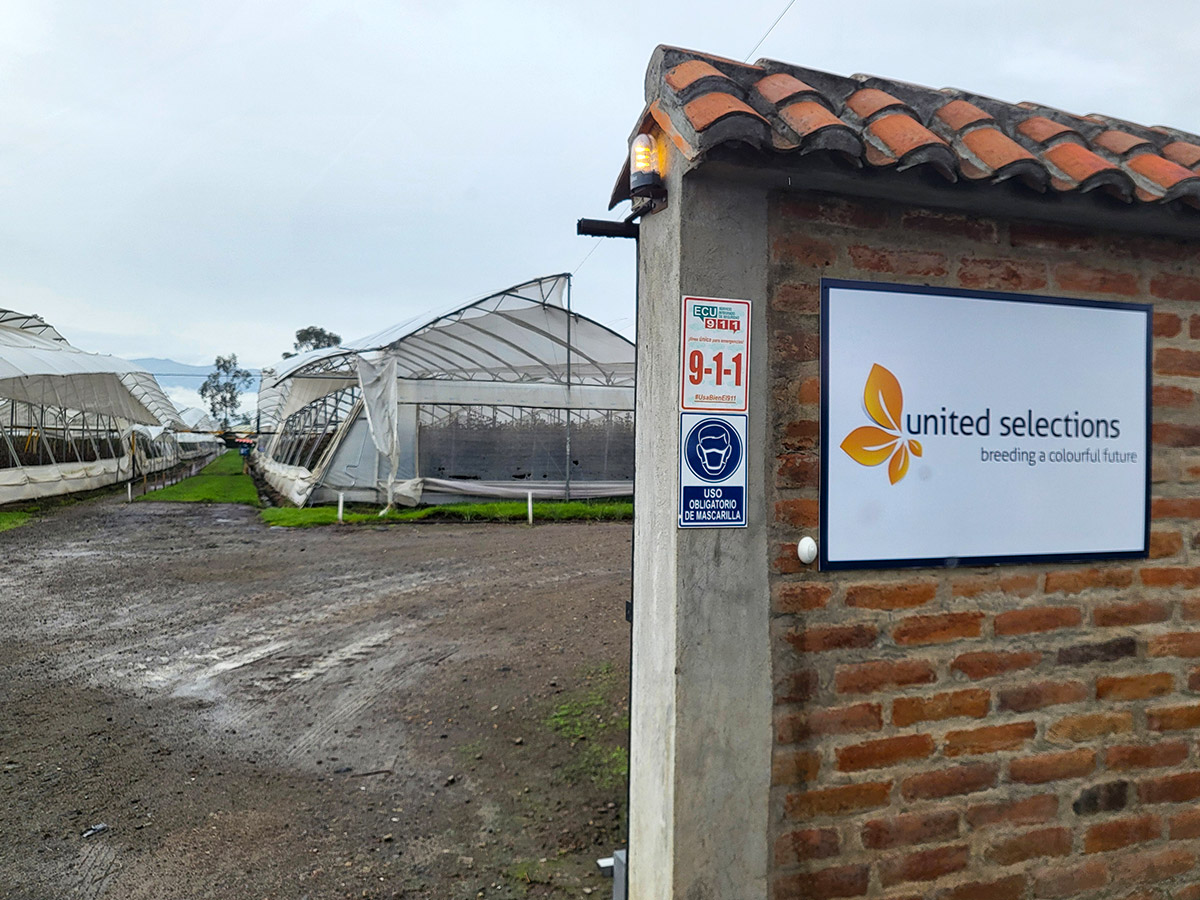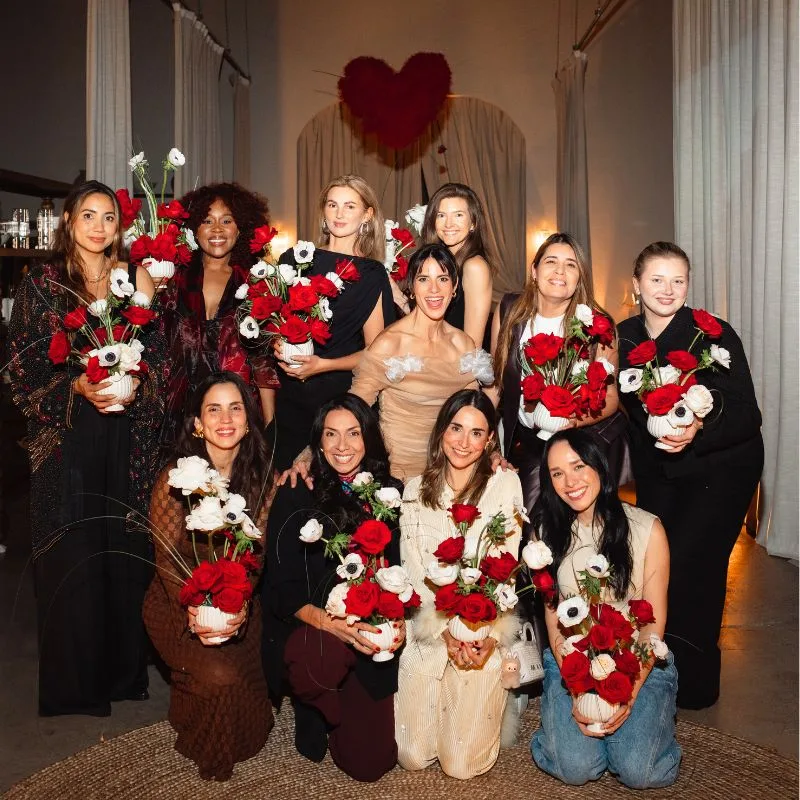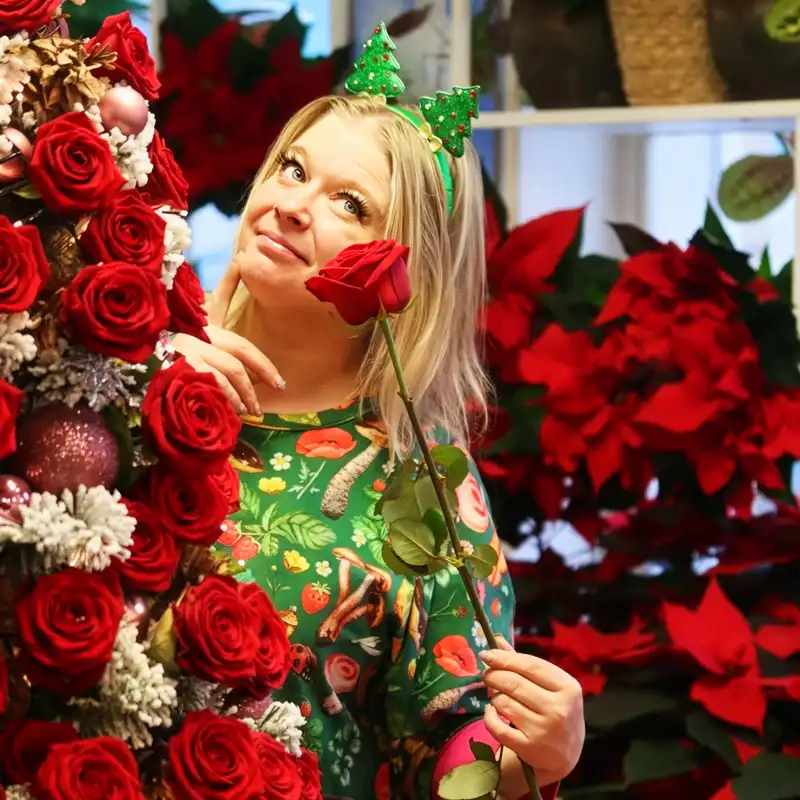In the Ecuadorian hills of Cayambe, important work is being done for growers, traders, and florists around the world. In one of the floriculture hotspots of the high-altitude landscape, breeder United Selections has its testing facilities and show greenhouses.
Next to their impressive booth at Ecuador's biggest floral fair—the bi-annual Expo Flor Ecuador—the breeder welcomes guests at its own farm. This is a report from a visit during the week of the fair to these facilities for you to get a better understanding of the lengths this global top breeder goes to craft their perfect roses.
United Selection's Breeding Farm in Cayambe
At a 1 to 2-hour drive—depending on the traffic—from the country's capital Quito you'll find yourself in rose heaven. Well, you're at almost 3,000 meters above sea level, so for many earthlings a little closer to heaven anyway. United Selections has been in this area for many years already, but in March 2024 they opened their new office here. Situated amidst the beautiful landscapes of the Andes mountains the brand-new showhouse showcases an exquisite collection of standard and spray roses, carefully selected to thrive in the region’s unique environmental conditions.
Jelle Posthumus, CEO at United Selections, says:
"We are delighted to have our very own offices and greenhouses here in Ecuador. This new facility exemplifies our dedication and further strengthens and serves the Latin American growers market in an improved way."

The farm is spotless and gives a clear overview of everything that is being developed with this breeder for the Latin American (Latam) growers.
Visitors are in for a treat when they find themselves surrounded by fully planted displays showcasing a diverse range of rose varieties featuring a mix of popular varieties like Lighthouse, Madam Cerise, Cotopaxi, and Confidential. Fresh faces like Rise & Shine, Peach Wave, and Isla Bonita, along with stunning spray roses—the Blossoms series—are all in full bloom. While its newest additions are still being put to the test through research and development, Jelle and his crew are excited about their potential to push the boundaries of what’s next in the rose world.
The Long Journey Starts in Africa
The final phase of a long journey to find the next great rose for the Ecuadorian growers comes to a close at the facilities in Cayambe. That journey is defined by five stages that started several years ago in Africa with phase 1, where millions of seeds were planted. In this phase, just like in the next four, the vast majority of the outcome is rejected by a lack of product specifications or commercial potential.
When it comes to phase 3, it has become clear which varieties could thrive in African altitudes and which are ready to travel westwards or eastwards along the same latitude shared by Kenya and Ecuador.
The root stocks of the promising Latin varieties are moved to the greenhouses in Ecuador and Colombia and from there, the last two phases begin. Imagine that by that time over 99.9 percent of the original seeds have already been rejected, because they are either not suitable for growing on a large scale, or do not add anything to the vast assortment of commercially grown roses for the markets that buy the United Selections varieties all over the world. The ones that grow with Latam growers are mainly exported to the USA, Europe, and increasingly the Middle East.

The Final Phases in Ecuador
For over 25 years Ir. Paul de Bruin is head of the international integrated team R&D at United Selections and its predecessor Preesman. Paul graduated cum laude at the Agricultural University of Wageningen, Netherlands. The Dutchman coordinates breeding, testing, and selection activities in the United Selection's R&D centers in Europe, Africa, Latin America, and Asia, together with local selection managers.
Paul owns the ability to explain the principles of cultivation to a layman in a way that you feel like a bit of an expert as well. Still, when you look at the amount of work and knowledge that goes into making the right decisions, it is clear that it takes a lot of both technical know-how as well as knowledge of the Ecuadorian growers' market to select the right roses for this specific elevated area.
Paul:
"The colors that we are currently looking for most are yellow and orange. There are big possibilities for a great new rose in one of these colors. Of course, United Selections has already roses with Ecuadorian growers in these colors. Yellow varieties like Rise & Shine and Lighthouse, and orange ones like the recent Sawa and Orange House and the established Confidential are doing great, but there is a market for more of these colors. So, that has our focus right now."
Of course, there are many more colors tested in the Cayambe greenhouses. Some are already commercialized like the famous big red standard rose Madam Red, the white Adalonia, and the lilac Orinoco. Many others are only still known by their internal registration numbers. Once a variety becomes interesting for growers in Ecuador, it will receive a name that fits its look & feel.

Spray Rose Blossoms
Also the spray rose varieties have the focus of United Selections. One side of the greenhouse is entirely reserved for developing the different varieties of the beloved Blossoms series. It is clear to see that from one Blossoms comes the next; from the dark red Spray Rose Velvet Blossoms to the dark pink Hot Blossoms, and the surrounding nameless future varieties of Blossoms that still only have a number. It is to see that every color, every mutant, every size and shape is being thoroughly monitored to make sure the growers get a flawless product when they are ready for large-scale commercialization.

Modern Breeding Technologies
Paul knows all about how breeding has developed over the last three decades. United Selections knows a lot more about its plants these days because of the possibility of looking at their DNA.
Paul:
"The outcome has become easier to predict because of all modern technologies. Also, AI will play its part in the understanding of the breeding result, especially when it comes to the knowledge of the best conditions for the optimal result."
If breeding were easy, everybody could do it. It's not like you mix a strong red and a strong white and you get a strong pink rose. It might be that several gen-related issues lead to an unexpected color with different specs. However, because of a big database of information gathered over the years, Paul and his Latin American team of breeders in Ecuador, Colombia, and Mexico rarely get caught by surprise.
It must be a comforting thought for Latam growers and their wholesale customers worldwide to know the dedication that the people of United Selections put into the breeding processes, all the way from phase 1 in Africa to phase 5 here in Ecuador, and beyond. Because does not stop at the gate. Breeder United Selections presents itself worldwide as a hands-on breeder with an open-door policy and an open mind toward the next phases of the floral chain.
Header image: Ecuador Sales Manager Hugo Cifuentes with a high-potential bright pink novelty (no name yet).













